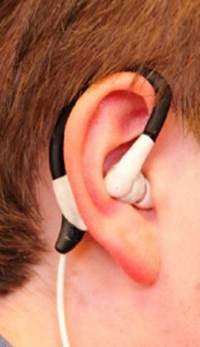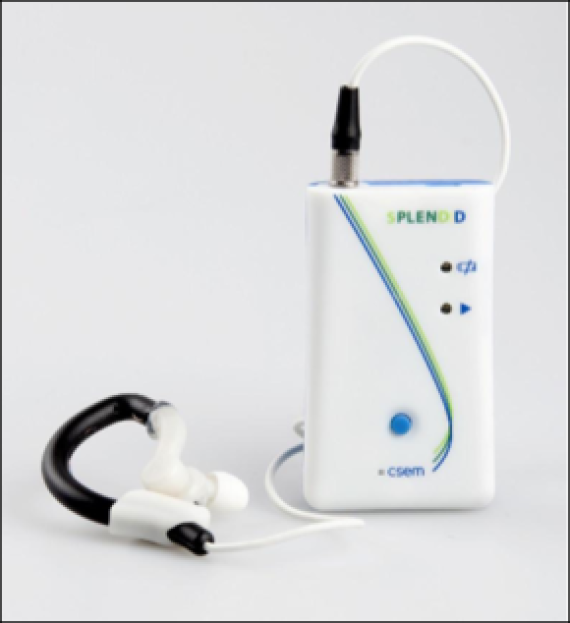Foto: CSEM Zwitserland
Obesity is a growing problem for public health. One way of encouraging a healthier lifestyle is to measure people’s eating patterns. But how do you do that? ‘At present, people have to report on their own behaviour,’ says Van den Boer. ‘That’s not very reliable.’
There are already sensors that use a microphone to pick up chewing sounds but they also record a lot of extraneous noise. In the SPLENDID EU project, researchers developed a more sophisticated chewing sensor that has a photoplethysmography (PPG) sensor in addition to a small microphone. It measures the blood perfusion in tissue. Van den Boer: ‘When someone chews, the movements in the jaw muscles cause variations in the blood perfusion of the ear. The PPG sensor on the ear measures these variations using light.’ An LED light is placed on one side of the ear and a detector on the other that measures how much light the ear lets through.

Foto: Janet van den Boer
As soon as the person wearing the sensor starts chewing, a message is sent to their smartphone asking whether they are actually eating and if so, what and how much. The signal is filtered beforehand with the help of algorithms, explains Van den Boer. ‘That way, you know someone isn’t talking, for example. That also lets you correct for sudden changes in the amount of light in the environment.’
Van den Boer does not expect the sensor to come onto the market straight away. ‘We will have to develop it further first. It’s currently rather uncomfortable, for instance, if you wear it for a long time.’

